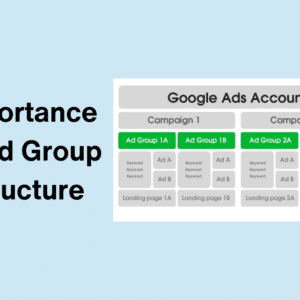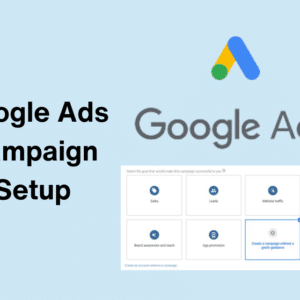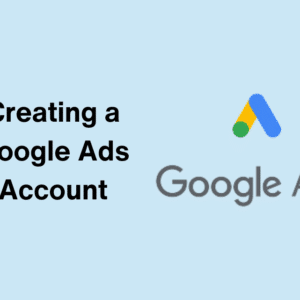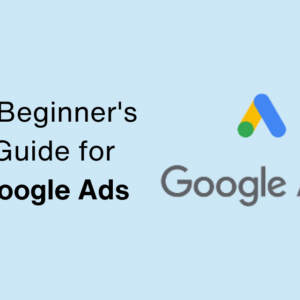Google Ads is a robust advertising platform that allows businesses to reach their target audiences efficiently and effectively. However, to get the most out of your Google Ads campaigns, it’s essential to understand and properly configure your campaign settings. This guide delves into the key aspects of Google Ads campaign settings, focusing on budget, bidding, and targeting. By the end of this tutorial, you’ll be equipped with the knowledge to optimize your Google Ads campaigns for maximum performance.
Introduction to Google Ads Campaign Settings
Google Ads campaigns consist of multiple components including campaigns, ad groups, ads, and keywords. Each campaign requires careful planning and setting adjustments to align with your marketing goals. This guide will walk you through the critical aspects of configuring your Google Ads campaigns, specifically focusing on budget, bidding, and targeting.
Setting Up Your Budget
What is a Google Ads Budget?
A Google Ads budget is the amount of money you are willing to spend on a particular campaign each day. Proper budget setting is crucial as it impacts how frequently your ads are shown and the overall reach of your campaign.
How to Set Your Budget
- Determine Your Marketing Goals: Identify whether your primary goal is to drive sales, increase website traffic, or boost brand awareness. Your marketing goals will influence your budget allocation.
- Calculate Your Daily Budget: Estimate your monthly ad spend and divide it by 30.4 (the average number of days in a month) to get your daily budget. For example, if your monthly budget is $1,000, your daily budget should be approximately $32.90.
- Start Small and Scale: Begin with a conservative budget to test the effectiveness of your campaigns. As you gather performance data, you can increase your budget for high-performing campaigns.
Tips for Managing Your Budget
- Monitor Performance Regularly: Regularly review your campaign performance and adjust your budget based on the results. Use Google Ads’ performance metrics to make informed decisions.
- Allocate Budget Wisely: Allocate more budget to campaigns that deliver high returns and reduce spending on underperforming campaigns.
- Avoid Budget Depletion: Ensure your daily budget is sufficient to avoid running out early in the day, which can result in missed opportunities. Adjust your bids and budget to balance cost and reach.
Bidding Strategies
What is Google Ads Bidding?
Bidding in Google Ads determines how much you’re willing to pay for each click on your ads. Google Ads offers various bidding strategies tailored to different marketing objectives.
Types of Bidding Strategies
- Manual CPC (Cost-Per-Click): You set the maximum cost you’re willing to pay for each click. This strategy gives you full control over your bids.
- Enhanced CPC: Google automatically adjusts your manual bids to maximize conversions while keeping the average CPC within your specified limit.
- Maximize Clicks: Google automatically sets bids to get the most clicks within your budget. Ideal for increasing website traffic.
- Target CPA (Cost-Per-Acquisition): Google sets bids to get as many conversions as possible at your target CPA. This strategy focuses on acquiring new customers at a specific cost.
- Target ROAS (Return on Ad Spend): Bids are set to maximize revenue based on your target return on ad spend. Best for campaigns focused on maximizing revenue.
- Maximize Conversions: Automatically sets bids to get the most conversions within your budget. Suitable for campaigns with conversion goals.
- Maximize Conversion Value: Aims to maximize the total conversion value within your budget. Best for businesses that want to prioritize high-value conversions.
- Target Impression Share: Sets bids to show your ad at the top of the page or on the first page of search results. Useful for increasing visibility.
How to Choose the Right Bidding Strategy
- Align with Goals: Choose a strategy that aligns with your campaign goals. For instance, use “Maximize Conversions” if your goal is to increase sales.
- Consider Your Budget: Some strategies, like “Target ROAS,” may require a larger budget to be effective. Ensure your budget can support your chosen strategy.
- Test and Optimize: Start with a bidding strategy and monitor its performance. Be prepared to switch strategies based on the results and campaign objectives.
Targeting Options
What is Targeting in Google Ads?
Targeting in Google Ads involves selecting specific audiences, locations, and other criteria to determine who sees your ads. Effective targeting ensures that your ads reach the most relevant users, increasing the likelihood of conversions.
Types of Targeting Options
- Keywords: Select keywords that match the search terms your target audience is using. Use tools like Google Keyword Planner to identify relevant keywords.
- Location Targeting: Choose specific geographic areas where you want your ads to appear. This can range from countries to cities or even a specific radius around a location.
- Demographic Targeting: Target users based on age, gender, parental status, and household income. This helps tailor your ads to the most relevant audience segments.
- Interest Targeting: Reach users based on their interests and online behavior. Google categorizes users based on their browsing activity.
- Remarketing: Show ads to users who have previously visited your website or interacted with your brand. This helps re-engage potential customers and increase conversion rates.
- Device Targeting: Choose to display your ads on specific devices such as desktops, tablets, or mobile phones. Tailor your ads based on device preferences.
- Ad Schedule: Set specific days and times when your ads will be shown. Optimize your ad schedule based on when your target audience is most active.
How to Choose the Right Targeting Options
- Define Your Audience: Clearly define your target audience based on demographics, interests, and online behavior. Use Google Analytics to gather insights about your audience.
- Use Keyword Research: Conduct thorough keyword research to identify the search terms your audience is using. Use tools like Google Keyword Planner and SEMrush.
- Leverage Demographic Data: Utilize demographic targeting to reach specific audience segments. Adjust your settings based on the demographics that perform best.
- Implement Remarketing: Set up remarketing campaigns to re-engage users who have previously interacted with your website. Create tailored ads to encourage them to return.
- Test and Adjust: Continuously test different targeting options and monitor their performance. Adjust your targeting settings based on the data and insights you gather.
Best Practices for Campaign Settings
- Set Clear Objectives: Define clear and measurable objectives for each campaign. This will guide your budget, bidding, and targeting decisions.
- Conduct A/B Testing: Regularly perform A/B tests on your ads, keywords, and targeting settings. Use the insights to optimize your campaigns for better performance.
- Monitor Performance Metrics: Keep a close eye on key performance metrics such as CTR, conversion rate, and ROAS. Use these metrics to make informed decisions about your campaigns.
- Optimize Landing Pages: Ensure your landing pages are optimized for conversions. This includes having a clear call-to-action, fast loading times, and relevant content.
- Stay Updated with Trends: Stay informed about the latest trends and updates in Google Ads. Regularly review industry blogs, forums, and Google’s official resources to stay ahead.
Conclusion
Setting up and managing Google Ads campaigns requires a thorough understanding of budget, bidding, and targeting options. By carefully planning and continuously optimizing these settings, you can maximize the effectiveness of your campaigns and achieve your marketing goals. Utilize the insights and best practices provided in this guide to create successful Google Ads campaigns that drive results for your business.
For more detailed information and the latest updates on Google Ads, visit Google Ads Help Center and Google Ads Blog.
Faq’s
How can I set an effective budget for my Google Ads campaign?
To set an effective budget, determine your marketing goals, calculate your daily budget based on your monthly spend, and start with a conservative budget. Adjust your budget based on campaign performance and allocate more funds to high-performing campaigns.
What are the best bidding strategies for new advertisers?
For new advertisers, starting with "Maximize Clicks" or "Manual CPC" can be effective. These strategies provide control and help gather initial performance data. As you gain more insights, consider transitioning to more advanced strategies like "Target CPA" or "Maximize Conversions."
How does remarketing work in Google Ads?
Remarketing allows you to show ads to users who have previously visited your website or interacted with your brand. This is achieved by placing a tracking code on your website, which adds visitors to your remarketing list. You can then create tailored ads to re-engage these users.
What targeting options should I use for local businesses?
Local businesses should utilize location targeting to focus on specific geographic areas. Additionally, demographic targeting and interest targeting can help reach a more relevant local audience. Adjusting your ad schedule to match peak local activity times can also be beneficial.
How often should I review and adjust my Google Ads campaign settings?
It's recommended to review and adjust your campaign settings at least once a week. Regular monitoring helps you identify trends, spot underperforming elements, and make timely adjustments to optimize performance.
Can I run multiple bidding strategies within the same campaign?
No, you can only select one bidding strategy per campaign. However, you can run different bidding strategies across multiple campaigns to test and determine which works best for your business objectives.
What is the importance of ad scheduling in Google Ads?
Ad scheduling allows you to display your ads during specific days and times when your target audience is most active. This helps optimize your budget and improve ad performance by focusing your spend on peak times.
How do I measure the success of my Google Ads campaigns?
Success can be measured using key performance metrics such as CTR (Click-Through Rate), conversion rate, CPA (Cost-Per-Acquisition), and ROAS (Return on Ad Spend). Google Ads provides detailed reports and analytics to help track these metrics.
What are the common mistakes to avoid in Google Ads campaign settings?
Common mistakes include setting an unrealistic budget, choosing the wrong bidding strategy, neglecting to monitor campaign performance, ignoring keyword research, and failing to optimize landing pages. Regular reviews and adjustments can help avoid these pitfalls.
Also Read: Google Ads Campaign Setup: Choosing the Right Campaign Type








I relish, lead to I discovered exactly what I was looking for.
You have ended my 4 day lengthy hunt! God Bless you man. Have
a great day. Bye
Also visit my web page :: John E. Snyder
Sure.